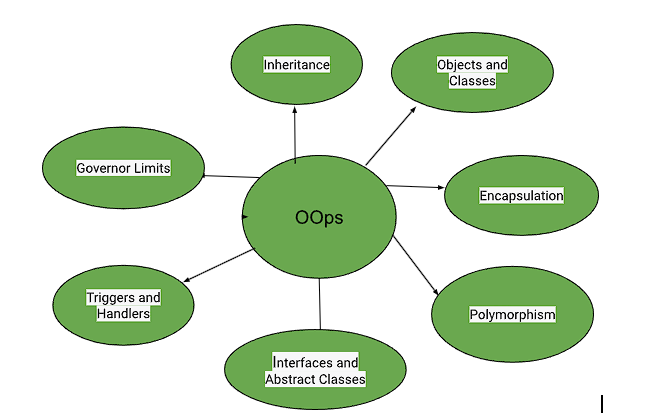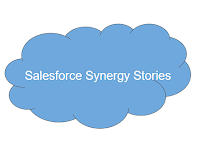A Deep Dive into Apex: The Object-Oriented Programming Language of Salesforce
Introduction
In the world of cloud computing, Salesforce stands out as a global leader in customer relationship management (CRM) software. Salesforce provides a powerful development environment that allows businesses to tailor their CRM solutions to meet their unique needs. At the heart of this ecosystem lies Apex, a robust and object-oriented programming language. In this blog, we'll take a deep dive into Apex, exploring its core concepts and how it enables developers to create customized applications within the Salesforce platform.
Understanding Apex
Apex is a proprietary programming language developed by Salesforce, specifically designed for building applications on the Salesforce platform. As an object-oriented language, Apex centers around the concept of objects, encapsulation, and a class-based architecture. It shares similarities with languages like Java and C#, making it relatively easy for developers with experience in these languages to transition to Apex.
Core Concepts of Apex
1. Objects and Classes: Apex follows a class-based object-oriented model. Classes serve as blueprints for creating objects, and these objects, in turn, represent real-world entities within the Salesforce platform. For example, an Account class might define properties and methods for managing customer account data.
In object-oriented programming (OOP), including in Apex, classes and objects are fundamental concepts that form the basis of the programming model. Let's explore these concepts in the context of Apex:
Classes in Apex:
1. Blueprint for Objects: In Apex, a class is a blueprint or template for creating objects. It defines the structure and behavior of objects that will be created based on it. Think of a class as a cookie cutter, and objects as the cookies that are cut out from the dough using that cutter.
2. Properties (Variables): In a class, you can define properties (also known as variables or fields) to represent the attributes or data associated with objects. These properties can have different data types, like text, numbers, or custom data types.
3. Methods (Functions): Classes can also contain methods, which are functions or procedures that define the behavior of objects. Methods are where you place the code that operates on the object's data and performs specific actions.
4. Access Modifiers: Apex classes support access modifiers that determine the visibility of class members (properties and methods). The three main access modifiers are `public`, `private`, and `protected`, which control how these members can be accessed by other parts of the code.
5. Constructor: A constructor is a special method in a class used to initialize an object when it's created. Constructors have the same name as the class and are called automatically when you create a new object.
Example of a simple Apex class:
apex
public class Car {
// Properties
public String make;
public Integer year;
// Constructor
public Car(String make, Integer year) {
this.make = make;
this.year = year;
}
// Method
public void startEngine() {
System.debug('Starting the engine of a ' + year + ' ' + make + ' car.');
}
}
```
Objects in Apex:
1. Instance of a Class: An object is an instance of a class. When you create an object, you're essentially creating a real, usable entity based on the blueprint defined by the class.
2 Access to Properties and Methods: Objects have access to the properties and methods defined in their class. You can access and modify the object's properties, as well as invoke its methods to perform actions.
Example of creating and using objects in Apex:
```apex
Car myCar = new Car('Toyota', 2022); // Creating an instance of the Car class
myCar.startEngine(); // Calling a method on the object
System.debug('My car make: ' + myCar.make); // Accessing a property
```
In the example above, `myCar` is an object of the `Car` class. You can see how it accesses both properties (make and year) and a method (startEngine) defined in the `Car` class.
Classes and objects are essential in Apex (and OOP in general) because they help encapsulate data and behavior, promote code reusability, and enable the creation of modular, well-structured code. By defining classes and creating objects, you can model real-world entities and interactions within your Salesforce applications, making your code more organized and efficient.
2. Inheritance: Apex supports class inheritance, enabling developers to create new classes based on existing ones. This promotes code reuse and modularity. Developers can extend or override the behavior of parent classes to suit their requirements.
3. Encapsulation: Apex enforces encapsulation, which means that class members (variables and methods) can have different access modifiers (private, protected, public). This ensures that data remains protected and accessible only as intended, enhancing security and maintainability.
4. Polymorphism: Polymorphism allows multiple classes to implement the same interface or inherit from a common parent class, resulting in code that can work with objects of different types. This concept is particularly useful in scenarios where developers need to write generic code to interact with various Salesforce objects.
5. Interfaces and Abstract Classes: Apex supports interfaces and abstract classes, enabling developers to define contracts for implementing specific methods and behaviors. This ensures consistency and enforces specific functionality across various classes.
6. Triggers and Handlers: Apex Triggers are essential components in Salesforce development. They allow developers to respond to events, such as record insert, update, or delete, and execute custom code. Typically, developers use trigger handlers to keep triggers organized and easy to maintain.
7. Governor Limits: Salesforce imposes certain limitations, known as Governor Limits, to ensure fair resource sharing and maintain system performance. Developers must be mindful of these limits when writing code. It's a unique challenge in Apex development that requires efficient coding practices.
Advantages of Using Apex
1. Tight Integration with Salesforce: Apex seamlessly integrates with Salesforce objects, making it easy to interact with CRM data and customize business processes.
2. Scalability: Apex applications can scale alongside Salesforce, making it an excellent choice for businesses of all sizes.
3. Security: With built-in access controls and security features, Apex ensures that sensitive data remains protected.
4. Community Support: The Salesforce community is vibrant and supportive, with numerous resources and forums available to help developers troubleshoot issues and share best practices.
5. Customization: Apex allows for highly tailored applications, enabling businesses to create solutions that perfectly align with their unique needs.
Challenges in Apex Development
1. Learning Curve: While Apex shares similarities with other object-oriented languages, there is still a learning curve, especially for those new to Salesforce development.
2. Governor Limits: Managing Governor Limits can be challenging, and developers must optimize their code to ensure it stays within the predefined boundaries.
Conclusion
Apex is the backbone of Salesforce development, offering a powerful, object-oriented programming language that empowers businesses to create custom CRM solutions. Its robust features, tight integration with Salesforce, and strong developer community make it a valuable tool for businesses looking to harness the full potential of the Salesforce platform. However, it's essential for developers to understand its unique challenges and constraints while enjoying its benefits. If you're considering Salesforce development, mastering Apex is a vital step toward creating the next generation of CRM solutions.
| @salesforce_stories_23 |






